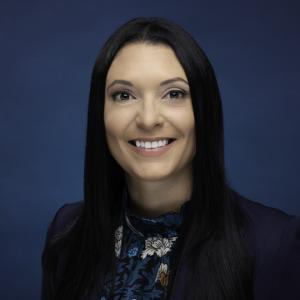Mercedes Kweh of KweHealth to be Featured on Close Up Radio
GAINESVILLE, FLORIDA, UNITED STATES, June 18, 2024 /EINPresswire.com/ -- Although the study of exosomes is still in its infancy, Mercedes Kweh, Ph.D. of KweHealth wants everyone to know how cool exosomes truly are. “Essentially, exosomes are like bubbles formed by our cells that carry biomaterial, and what makes them so remarkable, is that exosomes are actually how cells communicate,” explains Mercedes. “For a long time, we thought that the cells in cellular therapy were the key players. However, now we are learning that much of their functionality is a result of the signaling aspect of exosomes—not of the cells themselves”.
“All cells in our body have extracellular vesicles or EVs, exosomes are small EVs. Imagine the cells in our body as individual cities. Within each city, there are tasks and functions that must be carried out to keep everything running smoothly. These EVs, are like tiny delivery trucks that travel between cities, ensuring communication and transport of essential biomaterials,” explains Mercedes. “One type of EV acts like garbage trucks, picking up waste and unwanted materials from the cell and transporting them to the bloodstream for disposal, thereby keeping the cellular environment clean. Another type of EV, known as exosomes, functions like courier services. They carry vital supplies and information from one cell to another. For instance, if one city (cell) is experiencing a shortage of certain goods (proteins, lipids, RNA), the exosomes deliver these items from a well-supplied city. Exosomes also serve as messengers, relaying important signals between cells. For example, if there is an emergency situation such as inflammation in your toe, the exosomes deliver urgent messages instructing cells near the toes to produce specific substances needed to address the issue.
Another reason that exosomes are so cool is that they cross the blood brain barrier, which cells cannot. “The blood-brain barrier is a protective barrier that prevents most substances from entering the brain, however, this same barrier poses a significant challenge for delivering therapeutic agents to the brain using conventional cell therapy. In traditional cell therapy it is necessary to inject cells directly into the brain. Exosomes, on the other hand, can be introduced simply through the nose. This method of delivery is much safer and more practical.”
Researchers are looking into how to package therapies for exosome delivery. “By utilizing exosomes, we can deliver essential factors, such as proteins and RNAs, directly to where our body needs it. This capability opens up new avenues for treating complex conditions, which is very exciting,” shares Mercedes. “Pharmaceutical drugs typically focus on addressing a single problem. However, exosomes offer a unique advantage: they provide a means of delivering treatments that are multi-functional. This capability allows us to address multiple aspects of a disease simultaneously, rather than targeting just one symptom or condition."
KweHealth is focusing on neurodegenerative disorders. “Neurodegenerative diseases are not very well understood at the moment, and something that we really want to try to understand is how to use exosomes to potentially restore normal cellular function in diseases like Parkinson's and Alzheimer's. Another condition under investigation for exosome therapy is pain management. About a year ago, I contributed to a publication that showed pain reduction in about 20 minutes using naturally-derived exosomes. After just one application, a burn patient reported decreased pain levels from 10 out of 10, to 2 out of 10 on the pain scale. The experience was unbelievable because we really don’t know what caused the rapid reduction in pain—which is what KweHealth is focused on finding out. What is in naturally-derived exosomes that is causing this drastic recovery?” asks Mercedes.
What is known is that exosomes are great at delivering messages. “In the not-so-distant future, exosomes will be used to instruct cancers to self-destruct. They will signal skin cells to start regenerating and they will communicate to a site of injury to start angiogenesis, and promote the growth of new blood vessels. So yes, with exosomes, it’s all about delivery.”
Close Up Radio will feature Mercedes Kweh in a two-part interview with Jim Maters on Thursday June 20th at 1pm Eastern and with Doug Llewelyn on Thursday June 27th at 1pm Eastern
Listen to the show on BlogTalkRadio
If you have questions for our guest, please call (347) 996-3389
For more information about Mercedes Kweh, please visit https://www.kwehealth.com
Lou Ceparano
Close Up Television & Radio
+1 631-850-3314
email us here
Visit us on social media:
Facebook
Legal Disclaimer:
EIN Presswire provides this news content "as is" without warranty of any kind. We do not accept any responsibility or liability for the accuracy, content, images, videos, licenses, completeness, legality, or reliability of the information contained in this article. If you have any complaints or copyright issues related to this article, kindly contact the author above.


